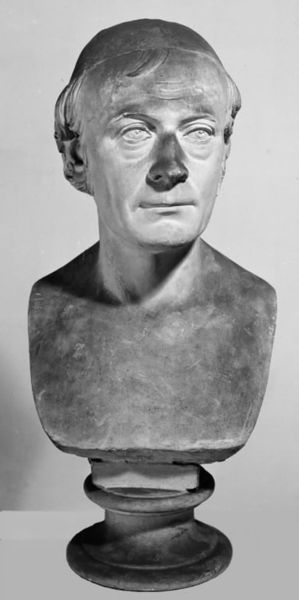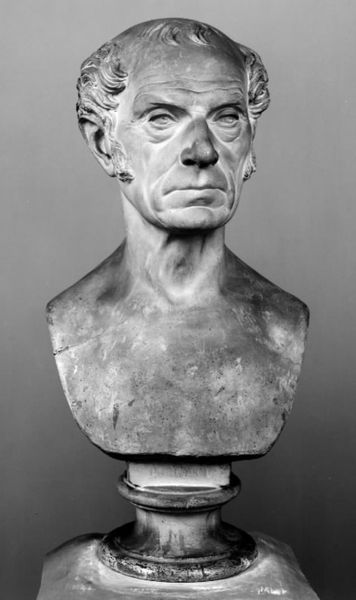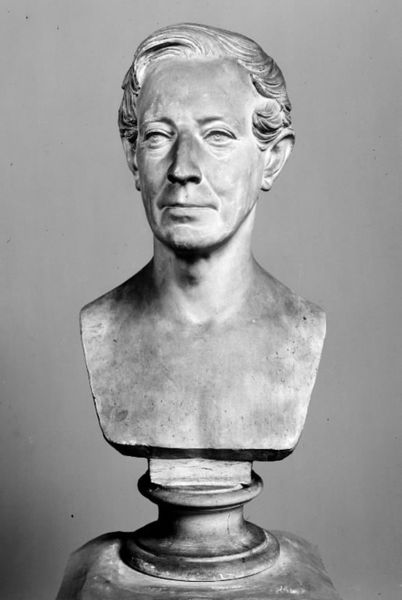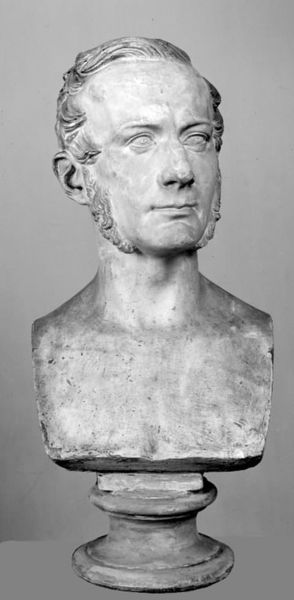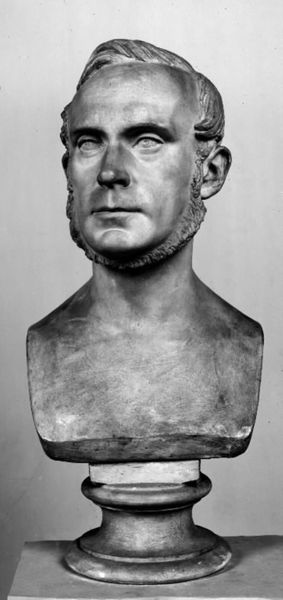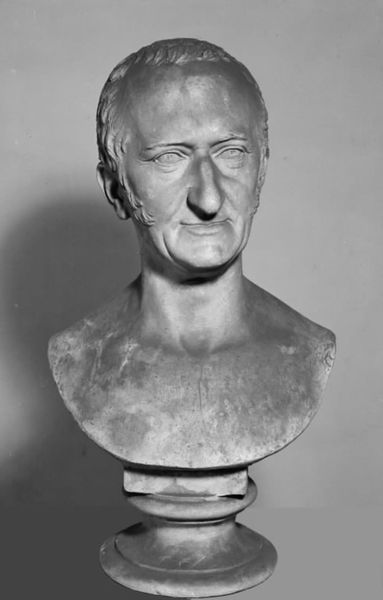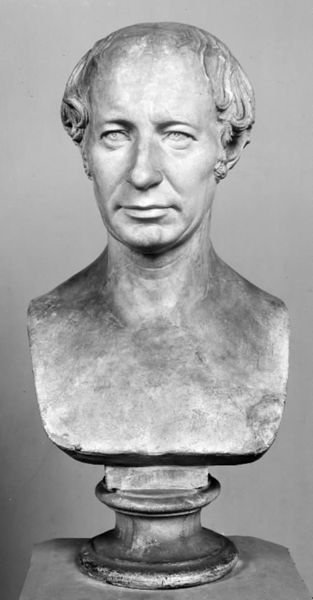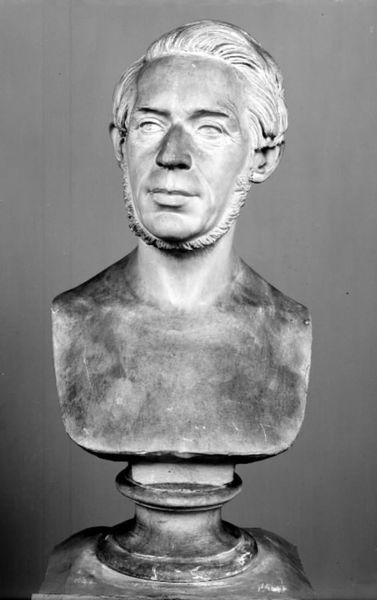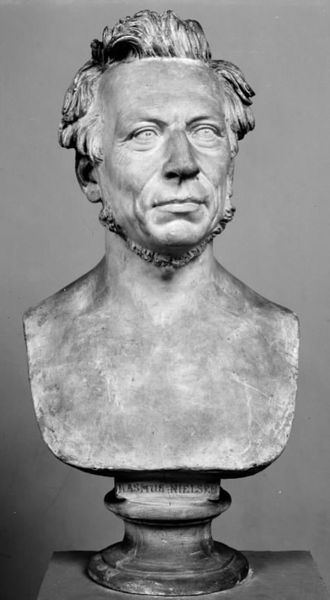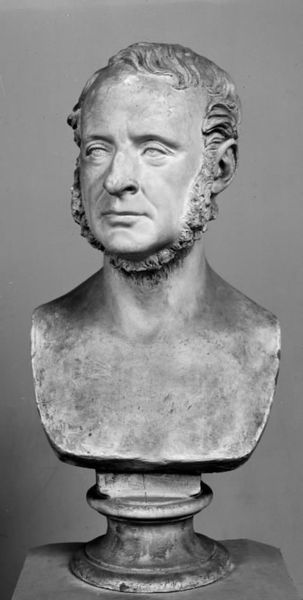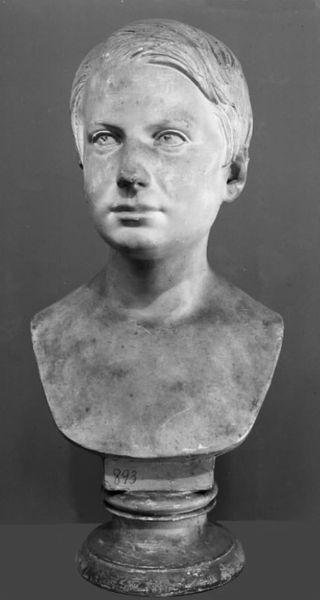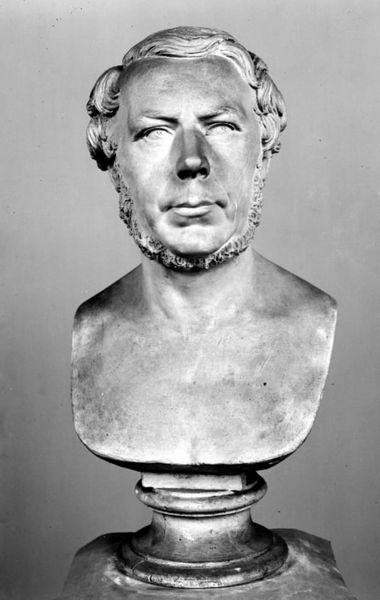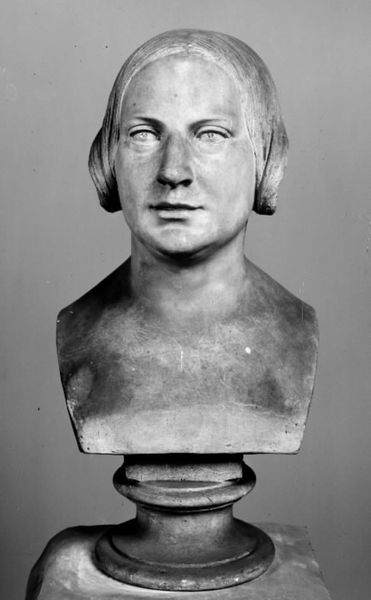
sculpture, marble
#
portrait
#
neoclacissism
#
sculpture
#
frontview face
#
form
#
geometric
#
classicism
#
sculpture
#
history-painting
#
marble
Dimensions: 45 cm (height) (Netto)
Curator: Here at the SMK, we have this 18th-century marble bust titled “Cicero.” Its Neoclassical style renders a historical figure with austere simplicity. Editor: There's a starkness to it, isn't there? The geometric planes of the face, the hard lines of the mouth—it's less about likeness and more about… stoicism? A constructed ideal of Roman virtue perhaps? Curator: Precisely! Marble, as a material, played a vital role in constructing that virtue. The quarrying, transportation, and carving were all deeply entwined with notions of labor and prestige in that period. Who commissioned this piece, and what were their motivations? What workshop produced it and under what conditions? These questions are as important as the artistic skill displayed. Editor: But you can’t deny the artist’s handling of form! Look at how the light catches the brow, or the subtle asymmetry of the mouth – it's far more than just propaganda. The turn of the head, the suggestion of movement; it’s about imbuing this cold marble with a semblance of life. I am captivated by its materiality: marble being a symbol of opulence and a vehicle for a return to a Classic ideal. Curator: I agree, and how that illusion was manufactured speaks volumes. Consider the social stratification required to bring such a sculpture into existence. Marble was a valuable commodity in the 18th century, the price of which speaks volumes about this work as more than just an aesthetic symbol of class. Editor: An artwork is inseparable from these intricate webs of material existence and creative thought, that cannot simply be quantified by value or labour input, it surpasses such reductionism. Curator: Understanding this sculpture demands acknowledging those systems and power relations embedded within it, reminding us how artworks become historical artifacts shaped by production. Editor: Absolutely. By exploring this work with respect for both the materials and methods behind its creation, and its aesthetic appeal we begin to uncover further historical and cultural dimensions.
Comments
No comments
Be the first to comment and join the conversation on the ultimate creative platform.
